Retail aisles lose their spark fast; the longer I leave a display untouched, the duller it looks and the more sales slip away. Shoppers walk on because nothing new grabs them.
Permanent displays should get small refreshes every three to six months and a full rebuild about every eighteen to twenty-four months, or sooner if traffic, season, or damage demands it.
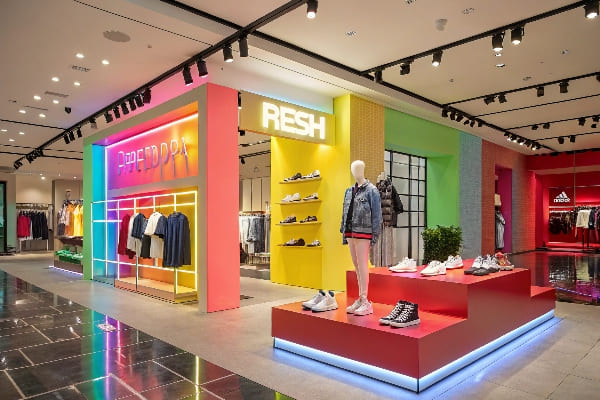
A clear rhythm keeps costs low and impact high. Below, I unpack the reasons and the methods so you can plan changes with confidence.
What is a temporary display?
A product launch comes, buzz peaks, then fades. I set up a bright stand, ride the wave, and pull it before the message feels old.
A temporary display is a short-life structure, often cardboard, designed to last from a few weeks to three months, then recycled or replaced once the campaign ends.
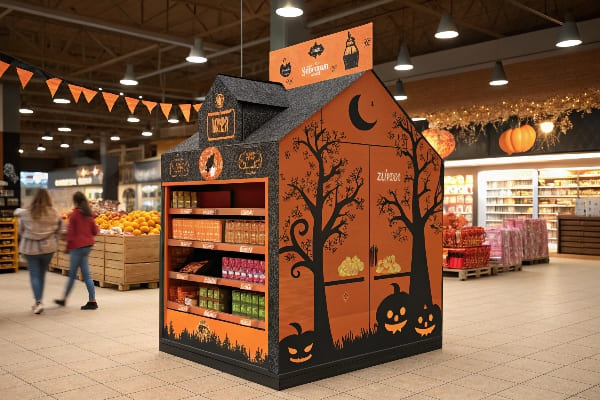
Purpose, Material, Lifespan
| Aspect | Temporary Display | Permanent Display |
|---|---|---|
| Main Goal | Fast traffic spike | Ongoing brand anchor |
| Typical Material | Corrugated board, foam, low-cost plastics | Wood, metal, durable board |
| Planned Lifespan | 2-12 weeks | 1-3 years |
| Install Time | Hours | Days |
| Removal Plan | Recycle, flat-pack | Reuse parts, refurbish |
Temporary units1 solve three pain points. First, speed: I can print, die-cut, and ship them in days from my Guangzhou lines. Second, cost2: the board is cheap, so a buyer like David at Barnett Outdoors can launch each new crossbow without draining budget. Third, flexibility3: his engineer tweaks artwork at the last minute; I update the print file and run a new batch before the rig hits the shelves. Their weakness is strength. A humid hunting expo can warp the shelves by week four. That is fine if the show ends on week three. I treat them as single-season tools, then break them down, recycle the paper fibers, and move to the next idea.
Why is it important to maintain displays?
Dust settles, edges bend, color fades. When I ignore those small flaws, trust drops and stock stagnates.
Regular upkeep protects brand image, prevents safety hazards, and maximizes return on the display investment by keeping shoppers engaged and products shoppable.
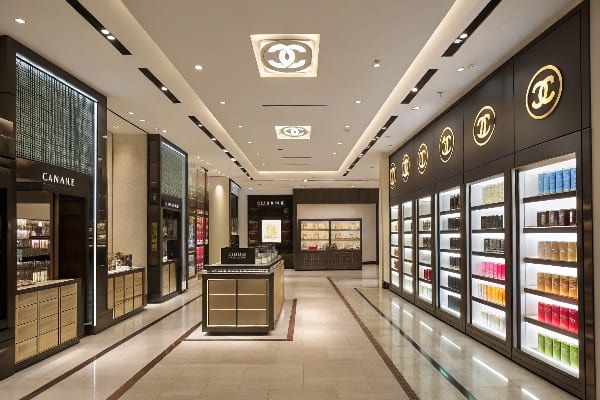
Risks of Neglect and Payoffs of Care
| Risk | Effect on Shopper | Cost to Retailer |
|---|---|---|
| Faded graphics4 | Doubt about product freshness | Lower conversions |
| Loose shelves5 | Safety claims | Liability expenses |
| Empty facings6 | Perceived out-of-stock | Lost sales |
I schedule weekly walk-throughs. I wipe surfaces, push product to the edge, and swap any bent hooks. My factory strength tests each shelf to hold 30% more weight than spec, yet real life still surprises. David once reported a sagging riser after a Texas roadshow; we traced it to a forklift bump. We shipped a replacement panel overnight. That swift move kept his buyer happy and stopped a chain reaction of complaints. Maintenance is not glamour, but it is cheaper than rebuilding from scratch.
What is the psychology of window displays?
Passersby decide in three seconds whether to enter. A window tells a fast story. If the story mirrors their need, they step in.
Window displays exploit contrast, motion, and storytelling to trigger curiosity, create emotional resonance, and pull shoppers across the threshold into the selling space.
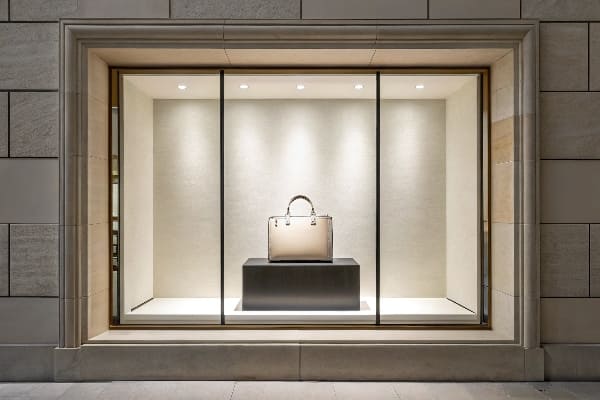
Three-Second Formula
| Element | What I Use | Why It Works |
|---|---|---|
| Contrast | Dark backdrop, lit hero product | Eyes hunt for difference |
| Motion | Rotating prop, subtle LED pulse | Brain tracks movement instinctively |
| Narrative | Single scene, clear protagonist | People remember stories, not lists |
Neuromarketing scans show that high-contrast zones7 spark the brain’s orienting response. I place the crossbow front center, lit from below, angled like it already fired an arrow. A simple prop, such as a hay bale target, finishes the scene. I avoid text clutter; one tagline in bold sans-serif suffices. When a shopper links that scene to their own hunting weekend, dopamine flows8, and the door swings open.
How do you maintain a display?
A checklist saves me time and stops guesswork. I walk, look, fix, note, and share the report.
Maintenance means scheduled inspections, immediate repairs, inventory rotation, and periodic graphic updates documented in a visible log.

Weekly Maintenance Checklist
| Step | Task | Tool | Responsible |
|---|---|---|---|
| 1 | Dust shelves and side panels | Microfiber cloth | Store staff |
| 2 | Check structural joints | Allen key set | Merchandiser |
| 3 | Restock product to front | SKU list | Stock clerk |
| 4 | Replace worn graphics | Pre-cut overlays | Vendor (me) |
| 5 | Log issues and photos | Shared sheet | Department head |
I give the retailer peel-and-stick graphic skins9. If a corner peels, they slap on a new panel in minutes. For structural parts, I design tool-free tabs10 so staff can slot in replacements without calling a carpenter. Digital photos go into a shared drive; I review them each month and propose upgrades. This remote audit11 cuts travel cost and speeds problem solving. The method scales for small shops and big chains alike.
What is the theory of window display?
The theory blends art and science. It borrows from Gestalt psychology, color theory, and retail metrics.
Window display theory states that composition, focal hierarchy, and sensory balance guide the viewer’s eye, build desire, and convert foot traffic into store entries.
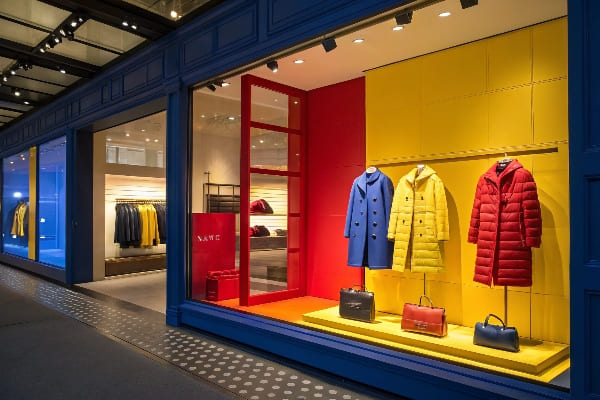
Applying Theory to Practice
| Principle | Practical Move | Example in My Work |
|---|---|---|
| Focal Point12 | Isolate hero product | Crossbow centered on raised plinth |
| Balance | Symmetry or deliberate tension | Twin quivers framing centerpiece |
| Rule of Thirds13 | Align key elements on thirds grid | Logo at top-left intersection |
| Depth14 | Layer foreground and background | Forest backdrop, product mid-level |
| Sensory Mix | Add texture or sound | Burlap floor, soft hunting call audio |
I start with the shopper’s line of sight. If the mall walkway is high traffic, I lift the display by 30 cm to meet eye level over the crowd. I map a grid, place my hero on a power position, then strip away extras. I respect white space; clutter kills clarity. Finally, I test with a live camera feed, watching where strangers pause. Data informs tweaks before roll-out.
How effective are window displays?
Footfall counters and POS data settle arguments. The moment I install a strong window, entry spikes and basket size follows.
A well-executed window display can raise store entries by 20-40 %, lift category sales by up to 30 %, and improve brand recall for months, according to in-store analytics.
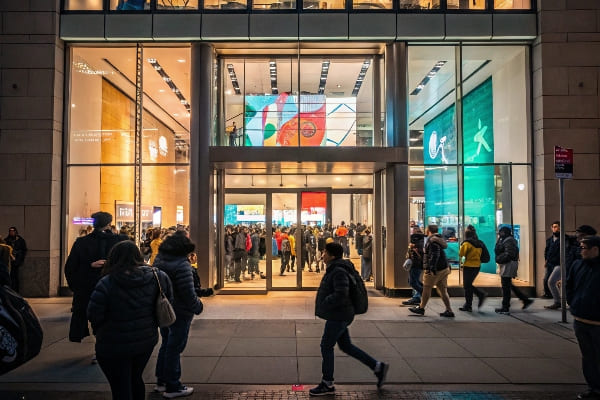
Measuring Impact
| Metric | Before Display | After Display | Change |
|---|---|---|---|
| Daily Entries | 800 | 1 040 | +30 % |
| Conversion Rate | 18 % | 23 % | +5 pt |
| Average Basket | \$45 | \$52 | +\$7 |
| Return Visits (30 days) | 12 % | 17 % | +5 pt |
I gather this data with simple tools. People counters feed a dashboard. POS pulls daily SKU sales. When Barnett Outdoors tested my cardboard showcase15 across ten Midwest stores, crossbow sales16 grew 28 % over the control group. The trial ran six weeks. The ROI17 covered design and freight within the first ten days. That is why David renews the program each season and why I keep refining the templates.
Conclusion
Refresh small elements each quarter and rebuild every couple of years; care, psychology, and measurement turn static fixtures into steady profit engines.
Explore how temporary units can provide speed, cost-effectiveness, and flexibility for marketing campaigns. ↩
Learn strategies for managing costs effectively when using temporary displays in marketing. ↩
Discover the significance of flexibility in display marketing and how it can enhance campaign success. ↩
Understanding the impact of faded graphics can help retailers improve product presentation and boost sales. ↩
Exploring the safety implications of loose shelves can help retailers mitigate risks and enhance customer safety. ↩
Learning about empty facings can guide retailers in maintaining stock levels and improving customer satisfaction. ↩
Understanding high-contrast zones can enhance your marketing strategies by leveraging visual appeal to capture attention. ↩
Exploring the role of dopamine in consumer behavior can provide insights into effective marketing techniques that resonate with customers. ↩
Explore the advantages of peel-and-stick graphic skins to enhance your retail space efficiently and cost-effectively. ↩
Learn how tool-free tabs can simplify maintenance tasks, saving time and reducing the need for professional help. ↩
Discover how remote audits can streamline operations and enhance problem-solving in retail settings. ↩
Understanding the focal point can enhance your product display strategy, making it more effective and engaging for customers. ↩
Exploring the rule of thirds can help you create visually appealing displays that attract more attention and drive sales. ↩
Learning about depth techniques can elevate your display design, making it more dynamic and interesting for shoppers. ↩
Exploring the advantages of cardboard showcases can inspire innovative display solutions that enhance sales. ↩
Understanding the dynamics of crossbow sales can help retailers optimize their strategies and boost revenue. ↩
Calculating ROI is crucial for assessing the effectiveness of marketing efforts and making informed decisions. ↩

